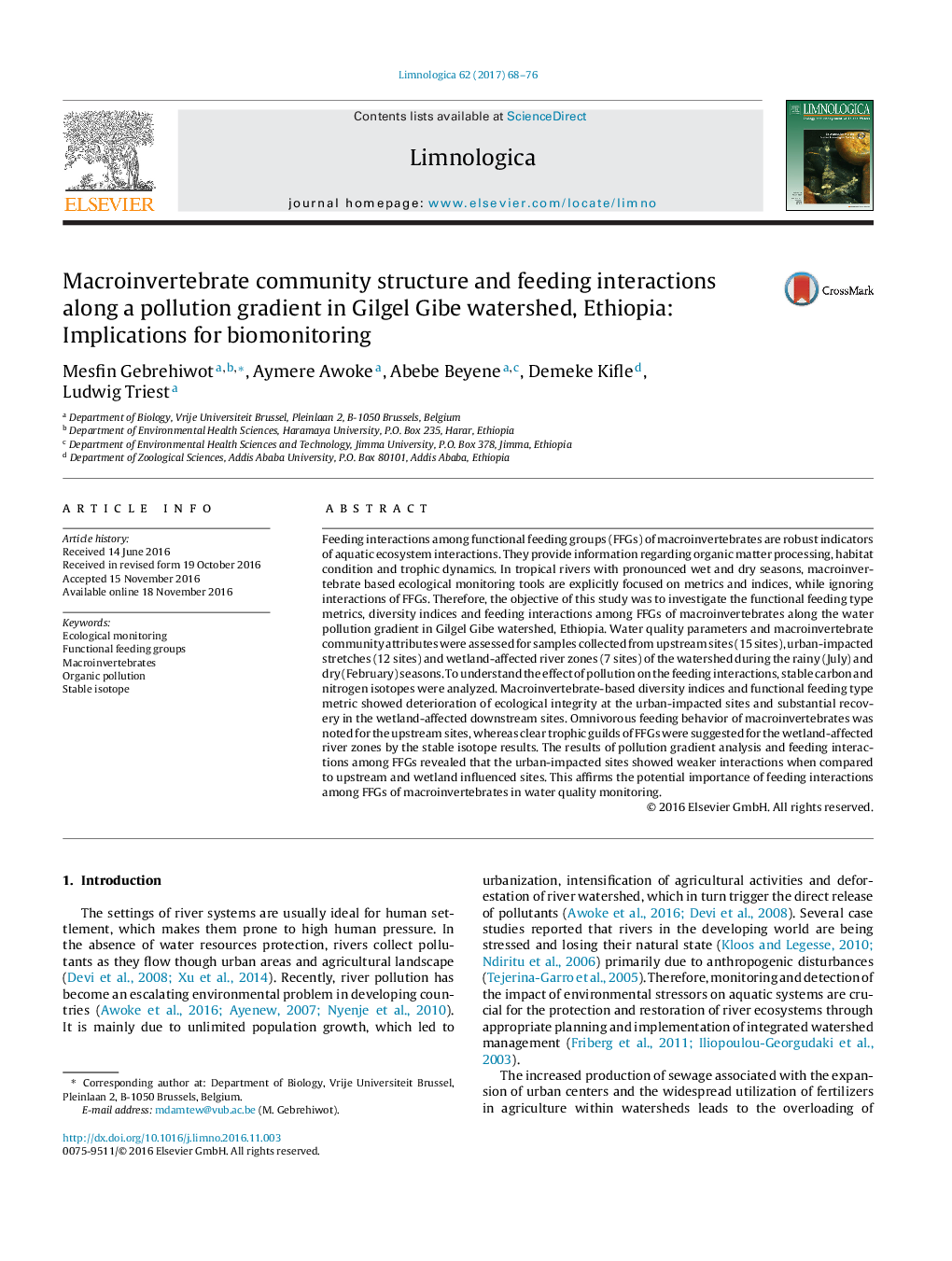| کد مقاله | کد نشریه | سال انتشار | مقاله انگلیسی | نسخه تمام متن |
|---|---|---|---|---|
| 5744890 | 1618560 | 2017 | 9 صفحه PDF | دانلود رایگان |
Feeding interactions among functional feeding groups (FFGs) of macroinvertebrates are robust indicators of aquatic ecosystem interactions. They provide information regarding organic matter processing, habitat condition and trophic dynamics. In tropical rivers with pronounced wet and dry seasons, macroinvertebrate based ecological monitoring tools are explicitly focused on metrics and indices, while ignoring interactions of FFGs. Therefore, the objective of this study was to investigate the functional feeding type metrics, diversity indices and feeding interactions among FFGs of macroinvertebrates along the water pollution gradient in Gilgel Gibe watershed, Ethiopia. Water quality parameters and macroinvertebrate community attributes were assessed for samples collected from upstream sites (15 sites), urban-impacted stretches (12 sites) and wetland-affected river zones (7 sites) of the watershed during the rainy (July) and dry (February) seasons. To understand the effect of pollution on the feeding interactions, stable carbon and nitrogen isotopes were analyzed. Macroinvertebrate-based diversity indices and functional feeding type metric showed deterioration of ecological integrity at the urban-impacted sites and substantial recovery in the wetland-affected downstream sites. Omnivorous feeding behavior of macroinvertebrates was noted for the upstream sites, whereas clear trophic guilds of FFGs were suggested for the wetland-affected river zones by the stable isotope results. The results of pollution gradient analysis and feeding interactions among FFGs revealed that the urban-impacted sites showed weaker interactions when compared to upstream and wetland influenced sites. This affirms the potential importance of feeding interactions among FFGs of macroinvertebrates in water quality monitoring.
Journal: Limnologica - Ecology and Management of Inland Waters - Volume 62, January 2017, Pages 68-76
